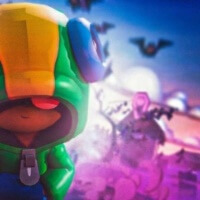Machine-tools are a class of metal removing machines such as lathes, millers and drillers. The basis of the cutting process is the movement of the cutting tool in relation to the material in a precise orientation and by a precise amount.
Traditional numerical control (NC) is based upon the movement being controlled via a pre-prepared punched paper tape. The development of microprocessors and compact computers have extended the sophistication of the control available, so that the term "computer numerical control" (CNC) is used. In practice, movements in all three dimensions are controlled.
The actual movement and monitoring of the controlled axes are carried out by motors and position transducers.
On the above basis numerical control machine-tools have been used for many years prior to the development of the microelectronics. The application of microcomputers allow for more sophisticated control. When metal is machined, its cutting properties can vary throughout the workpiece, particularly if it is a forging or casting. Microcomputers can add a further aspect of adaptive control by reacting to the current power consumption, torque, etc. of the driving motors.
Due to the nature of microcomputer systems a distributed processing approach can be adopted for the control of the various functions of a machine tool. This also allows a modular approach to the development of the hardware and software. In addition, greater operator interaction for unexpected situations is possible due to the work cycle not being restricted to preprogrammed punched paper tape.
Instead of being a substantial part of the cost of a machine tool, the use of microcomputers makes the numerical control cost less abd adds relatively little to the cost of the machine tool.
Some control systems are too complex for a single microprocessor. One approach is to use a bit slice microprocessor system whereby the codes of the data bus are broken into slices, each having the same number of bits (e.g. 16 bit into 4 slices of 4 bits). Each of the slices is then processed in a separate processor.
An alternative to bit slice microprocessor for complex systems is to use several microprocessors together.
Microcomputer A acts as a programmable interface between the machine tool and the system. It also handles tape and operator input and output. Microcomputer B calculates the axes motions as a function of time and hence the path of the cutter and microcomputer C controls the position of the feed axes. The three microcomputers share a common data memory. As more microcomputers are linked to the machine, a greater on-line processing capability is built up. For example, "worksurface programming" is the technique whereby the desired profile of the workpiece is specified and the size of the blank is entered. The control system works out the pattern of cuts necessary to produce the component. In some cases, this is displayed on the VDU as a check before the operator commits the machine.
The addition of VDUs machine tool control system allows a conversational approach which guides the operator when inputting the required data. The use of microcomputers has enabled the development of digital readout systems (with memory). The current position of all coordinates is displayed and in some cases the display can be switched at any time form one system of units to another and vice versa.
1.Сделайте перевод текста
2. Выберите ключевые моменты из текста
Ответы на вопрос:
ответ:.
Верстати - це клас машин для видалення металу, таких як токарні верстати, фрези та бурильні машини. В основі процесу різання лежить рух ріжучого інструменту по відношенню до матеріалу в точній орієнтації та в точній кількості.
Традиційне числове керування (NC) засноване на русі, що контролюється за до попередньо підготовленої перфорованої паперової стрічки. Розвиток мікропроцесорів та компактних комп’ютерів розширив вишуканість наявного керування, так що використовується термін "комп'ютерне числове управління" (ЧПУ).
На практиці рухи у всіх трьох вимірах контролюються.
Фактичний рух та моніторинг керованих осей здійснюють двигуни та перетворювачі положення.
Вищезазначені верстати для управління мікроелектронікою використовували протягом багатьох років до розвитку мікроелектроніки. Застосування мікрокомп'ютерів дозволяє вдосконалити управління. При обробці металу його ріжучі властивості можуть змінюватись протягом усієї заготовки, особливо якщо це кування або лиття. Мікрокомп'ютери можуть додати ще один аспект адаптивного керування, реагуючи на поточну витрату енергії, крутний момент і т.д. приводних двигунів.
У зв'язку з природою мікрокомп'ютерних систем може бути прийнятий підхід розподіленої обробки для управління різними функціями верстата. Це також дозволяє модульний підхід до розробки апаратного та програмного забезпечення. Крім того, можливе посилення взаємодії операторів для несподіваних ситуацій через те, що робочий цикл не обмежується попередньо запрограмованою перфорованою паперовою стрічкою.
Замість того, щоб бути значною частиною вартості верстата, використання мікрокомп'ютерів робить числові витрати на управління меншими, ніж abd, додає порівняно мало вартості верстата.
Деякі системи управління занадто складні для одного мікропроцесора. Один із підходів полягає у використанні мікропроцесорної системи бітових фрагментів, за до якої коди шини даних розбиваються на фрагменти, кожен має однакову кількість бітів (наприклад, 16 біт на 4 фрагменти по 4 біти). Кожен з фрагментів потім обробляється в окремому процесорі.
Альтернативою мікропроцесору бітового зрізу для складних систем є використання декількох мікропроцесорів разом.
Мікрокомп'ютер A виступає програмованим інтерфейсом між верстатом та системою. Він також обробляє введення та вихід стрічки та оператора. Мікрокомп'ютер B обчислює рухи осей як функцію часу, а отже, шлях різака і мікрокомп'ютера C керує положенням осей подачі. Три мікрокомп'ютери мають спільну пам'ять даних. Оскільки більше мікрокомп'ютерів підключено до машини, тим більша можливість он-лайн обробки. Наприклад, "програмування робочої поверхні" - це техніка, за до якої задається бажаний профіль заготовки та вводиться розмір бланка. Система управління розробляє схему надрізів, необхідних для виготовлення компонента. У деяких випадках це відображається на VDU як перевірка, перш ніж оператор здійснить машину.
Додавання системи управління верстатами VDU дозволяє здійснювати розмовний підхід, який керує оператором під час введення необхідних даних. Використання мікрокомп'ютерів дозволило розвинути цифрові системи зчитування (з пам'яттю). Показується поточне положення всіх координат, а в деяких випадках дисплей може перемикатися в будь-який час із однієї системи одиниць в іншу і навпаки.
Объяснение:
we russian children, when we are free we can: play computer! some children are still young and they play igrushki.naprimer even have children who are 10-12 years old and already esl they have a little brother or setrenka these children look after them .and they love it! i also very much prefer free time, i'm doing it 'cause i get tired that the rest! russian children we are the best! we have a lot of interests! and free vremini we the best country! and the kids had very good!
Популярно: Английский язык
-
Это нужно вставить буквы: f.. ce, n.. ce, e.. yes,. th, t..eth, he.....
 elinamar26.07.2021 14:31
elinamar26.07.2021 14:31 -
Articles: a/an and the 3. complete the sentences with the articles...
 Anzhelika062410.08.2020 04:07
Anzhelika062410.08.2020 04:07 -
1) преобразуйте следующие предложения в форму множественного числа....
 DarkDanilka12.10.2020 05:35
DarkDanilka12.10.2020 05:35 -
What day is nauryz this year? перевести...
 Апофис13.06.2023 16:18
Апофис13.06.2023 16:18 -
Сегодня с прям засада , много задали , ! !...
 дариямир1204.09.2022 23:36
дариямир1204.09.2022 23:36 -
Likely/unlikely/certain/sure+ infinitive. перевести с глаголом в...
 abeldinova8523.03.2023 15:50
abeldinova8523.03.2023 15:50 -
1) вставьте артикль, где необходимо. 1. i have three … sisters. 2....
 PROGamerTV1121.07.2021 07:28
PROGamerTV1121.07.2021 07:28 -
Язык. ! нужно сделать 1,2,3,4 номера. заранее !...
 122108105625.07.2022 04:43
122108105625.07.2022 04:43 -
Выберите нужную форму глагола tо bе или tо hаvе, перепишите предложения...
 Ирина767930.05.2022 01:04
Ирина767930.05.2022 01:04 -
Написатьписьмо святоому николаю на если не можете то на...
 pahalovrzx06.03.2020 21:27
pahalovrzx06.03.2020 21:27
